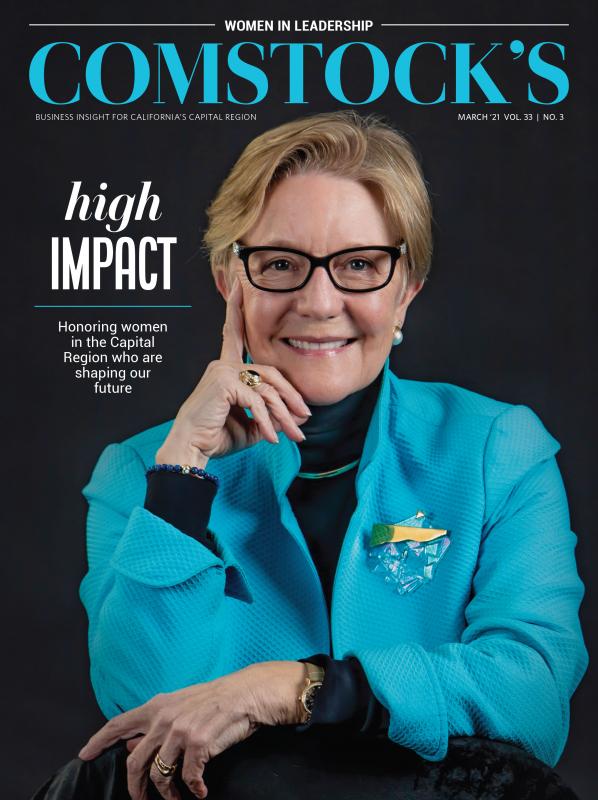It was October 2018, just after passage of California’s law requiring gender diversity on the boards of publicly traded companies headquartered in California. Esther Aguilera, president and CEO at the Washington, D.C.-based Latino Corporate Directors Association, strongly supported the new measure, Senate Bill 826. But her experience told her she should pay close attention to what came next.
Since boards often appoint those they know and they’re overwhelmingly white, she thought there was a good chance Latinas would be left behind. So her group set out to determine who was getting picked under the new law. LCDA dug in to the numbers, working with two companies that track corporate governance, looking at corporate proxy statements, calling firms and sometimes contacting individual board members.
Its results, released in March 2020, showed that by all measures, the new law did what it set out to. Through February 2020, more than 500 board seats at companies headquartered in the state had been filled by women, by LCDA’s count. (There are about 5,700 board seats total at those companies by one estimate.)
But the results also confirmed Aguilera’s concerns: In a state that is 39 percent Latino, 3.3 percent of those appointed were Latinas. Black and Asian American women also were underrepresented, though not as starkly (5.3 percent and 11.5 percent, respectively). About 78 percent of the new appointments had gone to white women.
LCDA’s data received wide media attention and helped boost a bill in the state legislature, Assembly Bill 979, that would build on the 2018 law to require appointments of traditionally underrepresented groups to corporate boards. In September 2020, Gov. Gavin Newsom signed it into law. By the end of 2021, the boards of California-headquartered public companies must have at least one member who identifies as one of several racial or ethnic minority groups or as LGBTQ, with the number rising for larger boards by the close of 2022.
It’s not just the state that’s putting pressure on public company boards. The growing number of studies finding a correlation between board diversity and corporate performance has led to a wave of investment firms and asset managers asking, sometimes demanding, that companies broaden representation. The trend is spreading to private companies too, which increasingly are pledging to change the look of their directorships. Here’s how experts say companies can use the new push to strengthen corporate governance.
Investors Are Voting With Their Dollars
The research drawing a correlation between board diversity and company performance continues to mount. One of the latest looks was an analysis in July 2020 by Vontobel Asset Management. Of the 150 largest companies on the S&P 500, Vontobel reported that over a five-year period, the firms on the S&P with the most ethnically diverse boards had earnings per share that grew 5 percentage points faster than those of the companies at the bottom on board diversity.
Correlation and causation are different entities, and other recent studies find that a board’s effectiveness in driving profits depends at least as much on how boards function as on how diverse they are.
But investors and asset managers, convinced by what’s known so far, are demanding change. On Dec. 1, 2020, Nasdaq asked the federal Securities and Exchange Commission for permission to adopt a new requirement that the companies on its exchange have at least one woman and one director from an underrepresented minority group on their boards — or face potential delisting. As of July 2020, Goldman Sachs started requiring that every company it assists in an initial public offering have at least one diverse board member, rising to two beginning in 2021.
And since July 2017, the California Public Employees’ Retirement System, the country’s second-largest retirement fund, has contacted more than 700 companies on the Russell 3000 index requesting they improve diversity on their boards out of concern for generating better returns for CalPERS retirees, says Simiso Nzima, its investment director and head of corporate governance. Most, he says, have complied.
It turns out an increasing number of sitting directors want to see their boards get new blood too. In the 2020 PwC annual survey of almost 700 corporate directors, 49 percent of respondents said someone on their board should be replaced, equaling the all-time high set in 2019 and up from 31 percent in 2012.
Sitting directors also agree that diverse boards are better boards: 83 percent of 2020 PwC respondents said diversity improves a board’s performance, though the survey didn’t define performance measures. “It would be unusual in the last at least five years that a board did not ask for diversity,” says Diane Miller, a corporate governance expert who’s president of Sacramento-based executive search firm Wilcox Miller & Nelson. “But that doesn’t mean they ended up there,” adds Miller, who’s sat on several corporate boards herself.
“‘Who do you know?’ is usually the first question that comes up when a board vacancy opens. If the board is currently not diverse, what are the chances that relying on directors’ personal networks will result in a diverse candidate pool?”
SIMISO NZIMA Investment director and head of corporate governance, CalPERS
Why not? Nzima chalks it up to how boards recruit: personal networks. “‘Who do you know?’ is usually the first question that comes up when a board vacancy opens,” he says. “If the board is currently not diverse, what are the chances that relying on directors’ personal networks will result in a diverse candidate pool?” And there may not be much deliberation going into those recruitment efforts: 33 percent of PwC respondents said their board’s succession plan was ad hoc, and 10 percent said there was no plan at all.
Strengthening Governance and Diversity
All that can change, according to those who work with companies to recruit effective board members. Most obviously, buy-in from company leaders and investors matters when it comes to getting directors from different backgrounds. A 2019 report from the U.S. Government Accountability Office says that having CEOs and investors or shareholders communicate how much board diversity matters is a key strategy in making it happen. “If an organization is going to really focus on diversity, it has to come from the leadership down. They really have to believe it, they have to live it,” says Robert Boroff, managing director at executive search firm Reaction Search International, which has a Sacramento office.
Another part of leadership is developing a disciplined strategy for getting to a diverse board. That starts with a board refreshment policy, which the PwC results indicate many firms don’t have. Beyond that, the GAO says that experts it consulted recommended firms set numerical targets for board diversity and require a diverse slate of candidates be considered when board slots come open. And at a June 2019 U.S. House of Representatives hearing, the founder of a firm that tracks diversity best practices at U.S. companies reported that one approach shown statistically to be most effective is to have a company form an executive diversity committee that monitors and reports on progress toward broader representation among company executives and directors.
Board recruitment experts also agree that companies should look beyond CEOs when making director picks. Not every CEO makes a good director because the board member’s role — providing oversight — is quite different from a CEO’s, says Miller. In board recruitment, she recommends looking at the next level of executives — say, the head of finance or marketing at a bigger firm. “If you’ve got an executive inside a large company (as a possible candidate) and you’re a small company, that can add a lot of value to your board,” she says. It also makes diversity recruitment easier because the pool of diverse CEOs is “supersmall,” she says.
Another option is to forgo the traditional focus on those with corporate board experience. Jana Rich is founder of Rich Talent Group, a San Francisco-headquartered executive search firm that specializes in helping companies diversify. In 25 years of recruiting executives, including for board positions, Rich says there has never been a board member recruit that did not work out — including those with no board experience. But that’s because her clients had developed a clear picture of what they needed. “To me, this is about being really specific about the knowledge you’re trying to bring to the boardroom,” she says. She points to the example of first-time corporate board member Dara Treseder, a 32-year-old Black chief marketing officer at Peloton who Rich recruited to serve on PG&E’s reconstituted board.
One reason companies need to be clear about what they’re seeking in a new director is the growing demand for talented people from underrepresented backgrounds. Interviewees are likely to ask sitting board members in interviews why they were sought out. Rich says the answer, “because we were required to,” is the wrong one. “There has to be something in this person’s background that you think will add value to your board,” says Rich. She points to a tech firm that wanted someone on its board with artificial intelligence expertise. She helped the firm recruit a woman of color who chairs the computer science and artificial intelligence lab at a major university.
Rich also says companies can open up their ranks by expanding the number of board slots, which can be good for governance. A lot of boards don’t have enough members to really offer oversight, she says: “A five-person board is pretty small. You’re not going to get a lot of diversity of thought.” For companies that have some scale, nine members seems to be the sweet spot, she says. Nancy Lee, a Sacramento corporate and business lawyer who advises organizations and trade associations on board governance, also suggests creating a pipeline for diverse candidates by setting up an advisory board or associate board member roles to assess future candidates’ potential while also preparing them for the role.
And Miller says companies that want board diversity need to reach beyond their own networks. That might mean asking for recommendations from groups like LCDA, Leadership Education for Asian Pacifics, Quorum (which advocates for more LGBTQ representation on boards) and the California Black Chamber of Commerce. And Lee suggests contacting the American Leadership Forum’s Mountain Valley Chapter, which cultivates emerging leaders and includes a focus on those from diverse backgrounds. It’s not clear how often companies reach out to groups like those for referrals: Josiah Young, a spokesperson for the California Black Chamber, says his group has never gotten a call from a company looking for a board candidate.
The pandemic has made recruitment for boards more difficult. American River Bank, based in Rancho Cordova and one of the region’s companies affected by the new law, will need to bring on one board member from an underrepresented group this year, and the bank is committed to having a board that looks like the community it serves, says president and CEO David Ritchie. But finding someone is complicated in these circumstances. “These are serious roles on public companies,” he says. “You kind of want to press the flesh a little bit before you put someone on your board.”
Rich says companies might work around that by inviting prospective board recruits to trial interactions with boards, like sitting in on a virtual working session to check out how they communicate and what they bring. And, at least for now, candidates and interviewers may meet outside at a distance to have a drink, she says.
A virtuous cycle could take hold as companies bring on directors with nontraditional backgrounds. Ultimately, firms that are able to get a wider range of representation on their boards may find the traditional networking approach to board recruitment works in their favor. That’s because having a diverse board makeup means there are at least a few on the board who themselves have nontraditional networks they can reach out to.
And if more diversity does lead to better corporate performance, it makes the company more attractive to a wider range of board candidates. “We really bank on our name and our technology, and from those I think we find greater opportunity with (board) applicants,” says Clyde Montevirgen, vice president of business development and investor relations at Davis-based Marrone Bio Innovations, which is also affected by the new law. “It’s hard to find candidates when a company is struggling. So it’s having the right combination of everything,” he says.
–
Get all the stories in our annual salute to women in leadership delivered to your inbox: Subscribe to the Comstock’s newsletter today.
Recommended For You

Dilemma of the Month: Were You Passed Over for a Promotion?
Didn’t land a promotion you think you deserved? Here’s what you
can and should do.

Room at the Top
Many nonprofits in the Capital Region are headed by women
Statistics and personal stories suggest that, overall, women may find more growth opportunities at nonprofits, and as a result, many more are opting for this route.

For Women Seeking Corporate Board Positions, It’s Still an Uphill Climb
A new California law is forcing publicly-traded for-profit businesses to get women on their boards. Yet getting tapped for a directorship is no easy feat.

Be a Better Board Member
Strategic ways to improve your nonprofit service and personal gain
Board members are introduced and then immediately expected to get along, share ideas and be productive. But that’s a difficult pattern for boards to follow effectively. So what makes a stellar board member?





